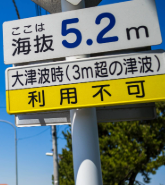The word epicenter was coined in the mid-19th century to mean the point at the surface above the source of an earthquake.
At the time, earthquakes were thought to be underground chemical explosions. After the 1891 earthquake in Japan and 1906 earthquake in California, it became clear that earthquakes are caused by sudden movement along a fault.
The fault that broke in 1906 was almost 300 miles long; it made no sense to define the source of the earthquake as a single point. The idea of the epicenter should have gone the way of other words attached to redundant scientific theories, such as “phlogiston” or “the aether.” But the term epicenter underwent a strange resurrection.
With the development of seismic recorders at the start of the 20th century, seismologists focused on identifying the time that the first seismic waves arrived from an earthquake. By running time backward from the array of recorders, they could pinpoint where the earthquake was initiated. They referred to the point at the surface above this location as the “epicenter,” shifting the original 19th century meaning.
For small earthquakes, the fault would not have broken far from the epicenter; for big earthquakes, the rupture can extend long distances away. Vibrations radiate from all along the fault rupture.
In the early 20th century, seismologists developed direct contact with the press to provide information on the latest earthquakes. Journalists learned to ask for the location of the epicenter because that was the only location seismologists could give. The term epicenter entered everyday language.
More recently, graphics departments in newspapers and TV news stations learned to map the location of the earthquake epicenter and draw rings around it—like the ripples from a stone thrown into a pond—as if the earthquake originated from a point, exactly as was the theory 150 years ago.
The bigger the earthquake, the more misleading this becomes. For example, the epicenter of the 2008 Wenchuan earthquake in China was at the southwest end of a fault rupture over 150 miles long. In the 1995 Kobe, Japan earthquake, the epicenter was far to the southwest even though the fault rupture ran right through the city. In the magnitude 9.3 Indian Ocean earthquake in 2004, the fault rupture extended for more than 600 miles. In each case, media included images showing a point with rings around it.
While the term epicenter has an important technical meaning in seismology for defining where the fault starts to break, for the last century, it has been a convenient way for seismologists to pacify journalists. Today, seismologists can deliver a reasonable map of the fault rupture within a few hours, eliminating the appeal of propagating the misleading use of the term epicenter in the media. Seismologists and reporters alike have a responsibility to provide more accurate representations of earthquakes.






